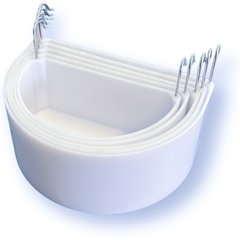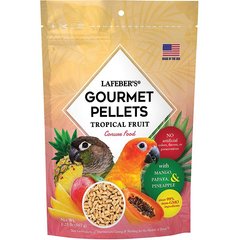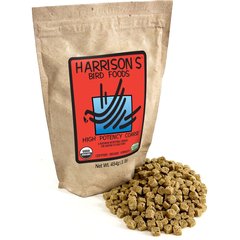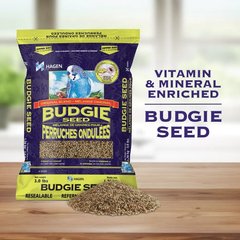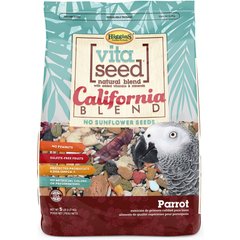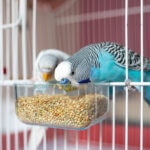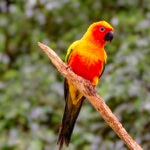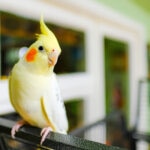Seeds vs Pellets: Which Is Better for Your Pet Bird?
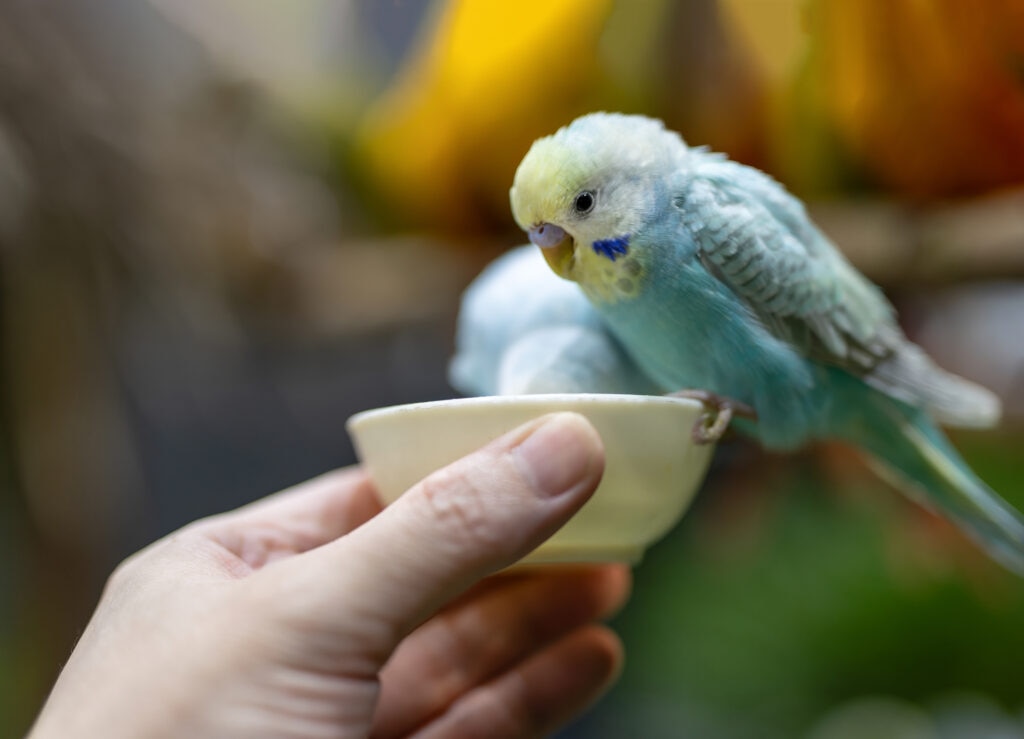
Photo by Backiris/iStock / Getty Images Plus via Getty Images
While a seed mix is often a go-to bird food because of its familiarity, a seed-only diet can fall short nutritionally for pet birds. Bird pellets, on the other hand, are formulated to offer a uniform complete blend of nutrition.
As a bird parent, it’s important to understand the differences between seed and pellet diets in order to give your feathered friend the best food for their unique needs.
Key Takeaways
- A seed-only diet doesn’t provide all the essential nutrients a pet bird needs, especially if they pick out only certain seeds from the mix.
- Pellets are formulated to offer complete nutrition, but birds need time—and patience—to adjust to a pelleted diet if they were previously on seed-only diets.
- Many birds prefer seeds, so transitioning to a pellet-based diet and other nutritious foods requires patience and a feeding strategy.
- Even with pellets as a main diet, it’s good to offer fresh veggies and small amounts of fruit, nuts, grains, and seeds for added nutrition and enrichment.
What Are Bird Seed Foods?
Bird seed foods are commercial seed mixes formulated specifically for pet birds.
These mixes are tailored to specific bird species or by beak size. In general, the smaller the beak, the smaller the seeds, and the bigger the beak, the bigger the seeds.
Our feathered companions are notorious for “choosing favorites” when it comes to what’s in their food bowl. Many pet birds will pick through the seed mix to weed out their short list of favorites (especially higher-fat seeds like sunflower and safflower) and ignore others.
Recommended Products
Over time, a seed-only diet can contribute to health issues such as:
- Obesity
- Low vitamin A levels
- Skin problems
- Respiratory problems
- Cardiovascular disease
- Liver disease
- Atherosclerosis (buildup in and on the artery walls)
“Seeds can be enriching for birds as they enjoy the challenge of opening and manipulating the seeds, and seeds can promote foraging behavior,” says Kara M. Burns, MS, MEd, LVT, VTS (Nutrition), founder and past president of the Academy of Veterinary Nutrition Technicians in Topeka, Kansas.
However, due to their high-fat content, seeds should be offered in small quantities, up to 10% of the total diet, to prevent malnutrition, especially obesity. Variety and moderation are key.
“Any single food used all the time can start to lose its enrichment ability if given all the time,” Burns says.
Pro Tip: Keep a variety of seeds on hand and rotate them as treats or training rewards for your bird. Smaller seeds can be especially useful for training sessions. Good seed options include:
- Millet
- Safflower
- Pumpkin seeds
- Flaxseed
What Are Bird Food Pellets?
Bird pellets are manufactured diets made to provide complete and balanced nutrition. They’re typically made from ground grains such as corn, soybean, and oat groats, with added vitamins, minerals, and other nutrients. Because the ingredients are blended and formed into uniform shapes, birds can’t pick out their favorites.
“You’re grinding various food items together and then processing them into a pellet, so now the bird doesn’t have the ability to select only the high-fat items, those that are deficient in vitamin A [or] calcium,” says Stephanie Lamb, DVM, DIPL ABVP (Avian Practice), co-owner of Arizona Exotic Animal Hospital with locations in Mesa, Phoenix, and Tucson, Arizona.
Two main processing methods are used to make bird pellets:
- Bound pellets: These are not cooked and have longer fiber chains, which can be less palatable for some birds.
- Extruded pellets: These are made by mixing finely ground grains with vitamins, minerals, and other essential nutrients to create a balanced formulation. This pellet mixture is then forced through an extruder at high heat and pressure. This method often results in a more palatable pellet.
Pelleted diets come in a variety of sizes and should be selected based on the species and size of the bird.
Recommended Products
How To Choose the Best Bird Food
Choosing the right food for your bird doesn’t have to be overwhelming. Here’s how to build a well-rounded diet that supports your bird’s health and preferences:
Start With a Pellet-Based Diet
For most pet birds, a base diet comprised of bird pellets is recommended over a diet based solely on seeds.
Offer Seeds in Moderation
That doesn’t mean seeds must be excluded altogether, but that seeds should be offered in moderation because they alone will not meet all of your pet bird’s nutritional needs.
Supplement With Variety
Don’t restrict your bird’s diet to only one food choice. Add variety to your bird’s menu, such as a serving of fresh vegetables, healthy grains, or a bit of fruit, nuts, seeds, and even flowers.
Factor In Your Bird’s Unique Needs
Also, keep in mind that not all birds’ dietary needs are the same. “Birds require certain nutrients based on their age, breeding status, health status,” says Lamb. “And given that there is variability among bird species, there can also be some variability in their dietary needs.
Choose the Right Food Size
Remember to always choose bird foods that are the appropriate size for your unique bird to help prevent choking.
Explore Vet-Recommended Food Options
Pet bird food options have evolved tremendously over the years, moving well past the old catchphrase, “Polly want a cracker?” Today, bird parents have access to a wide range of foods designed to support balanced nutrition and meet individual species’ needs according to life stage and texture preferences.
Options include:
- Harrison’s Organic Pellet Bird Food: A nutritionally balanced extruded pellet diet made with organic, non-GMO ingredients to maximize nutrition; available in different sizes and textures to appeal to a variety of bird species
Recommended Products
- Lafeber’s Avi-Cakes: A bridge food for birds transitioning from seeds to pellets, combining essential vitamins, minerals, and pellets with a familiar seed texture
Recommended Product
- Hari Hagen Seed Blend for Budgies: A seed diet tailored to specific species
Recommended Product
- Higgins Vita Seed California Blend for Parrots: A specialty seed blend that omits sunflower seeds, offering a lower-fat option
Recommended Product
How To Transition Your Bird From Seeds to Pellets
Some birds are easy to transition from seeds to pellets; others can put their caregiver’s patience to the test. But don’t give up; there are tried-and-true strategies you can deploy to get your feathered friend to accept pellets as a part of their diet.
Start With a 50/50 Blend
Lamb recommends offering half of the old diet and half of the new diet, and only feed what they will need per day. In her experience, birds will eat the old diet first, but by the end of the day, when they realize no more food is coming, they’re likely to get curious and check out the new diet.
Offer Pellets When They’re Most Hungry
Another strategy is to offer the new food first thing in the morning, when birds tend to have hearty appetites. After an hour or two give them their usual food, and then incrementally extend the time the new food is offered.
Make It a Foraging Opportunity
You can crumble up pellets and spread them out as a foraging opportunity to tempt your bird, or offer the new food in their preferred eating spot.
Track Their Weight
Burns recommends working with your veterinarian to understand your bird’s normal weight range and to use a scale like the Brecknell EPB500 Pocket Balance Digital Scale, which weighs in grams, not ounces, to track your bird’s weight during this transitional period.
Recommended Product
Watch for Signs of Success
Ensure your pet bird is truly eating the pellets, not just crushing them up. Signs of successful transition include a color change in droppings that reflects the pellet’s color; i.e., if your bird eats brown pellets, they will have brown droppings. Ask your vet what healthy droppings should look like and what signs might indicate a health problem.
Building a Balanced Bird Diet
Building a balanced bird diet starts at your veterinarian’s office.
“It’s really important to work with your vet to get a customized diet plan, because it allows you to know better what your bird’s current health status is; then you can know what it needs to get healthy or stay healthy,” Lamb says.
Things to consider and discuss with your veterinarian when choosing a bird diet include:
- Weight
- Life stage
- Activity level
These all require different calories or slight variations in nutrients and should be considered when selecting a diet, as each bird is different.
Seeds and pellets can both play a role in a healthy bird’s diet. What’s most important is variety and adjusting based on your bird’s specific needs, something your veterinarian can help you navigate.
